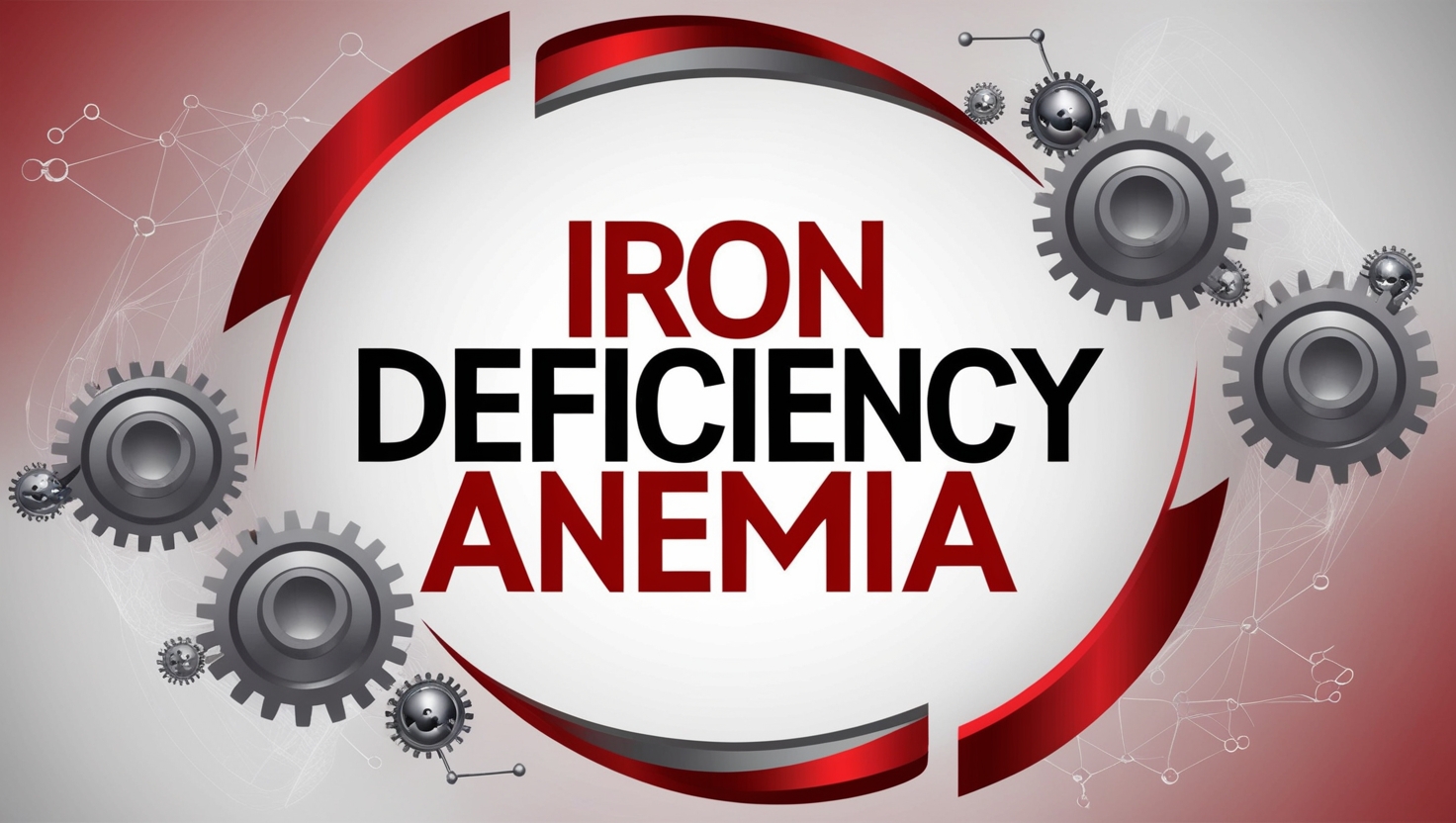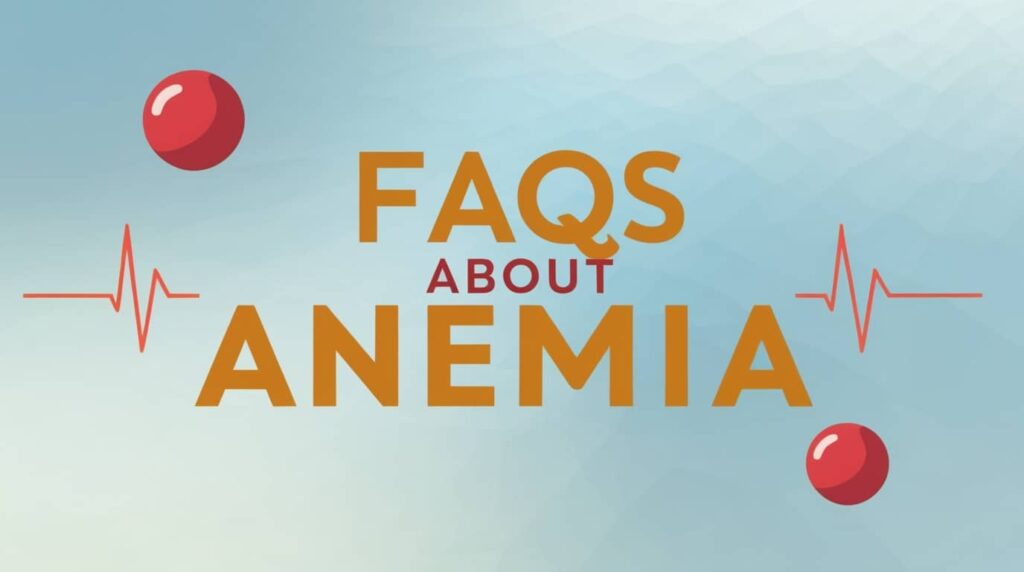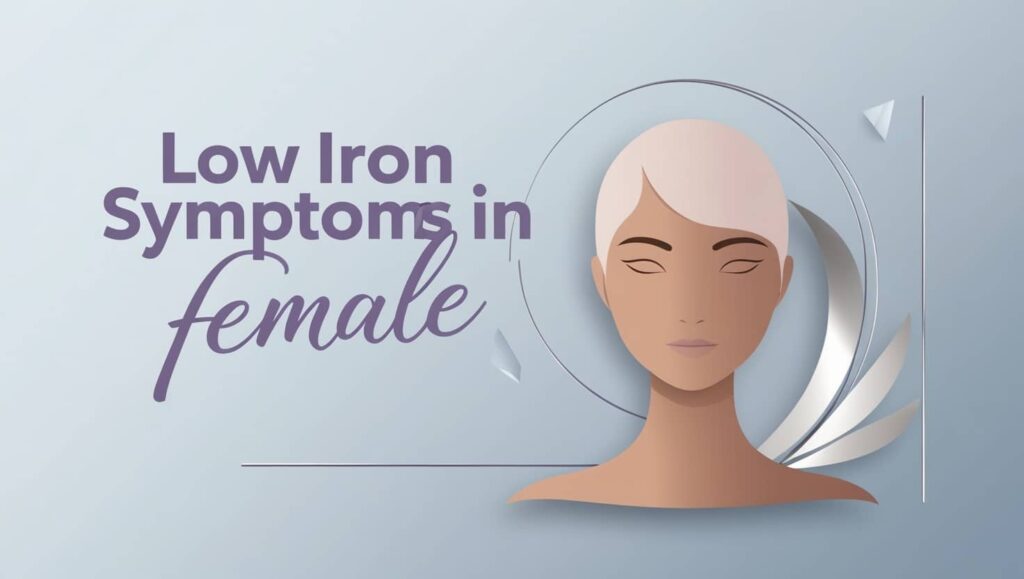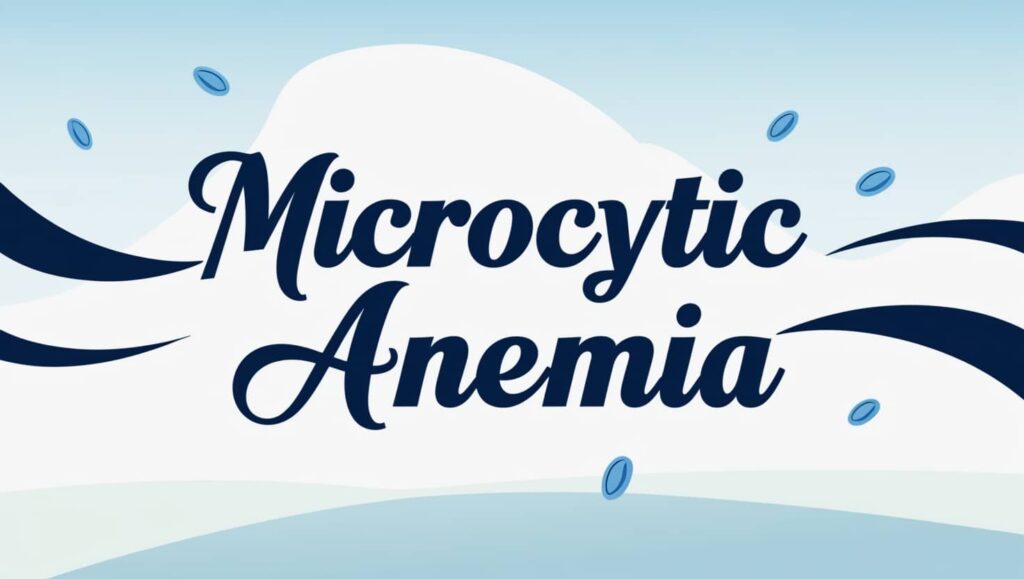Introduction
Iron deficiency anemia (IDA) is the most common cause of anemia and the most treatable of all anemias.
Anemia is defined by the World Health Organization (WHO) as a hemoglobin level of <13.0 g/dL in men, <12.0 g/dL in nonpregnant women, and <11.0 g/dL in pregnancy.
Iron deficiency is more prevalent in developing countries than in the United States, where the prevalence of IDA in men under 50 is 1%.
In the United States, 10% of women of childbearing age are iron deficient due to menstrual losses, while 9% of children aged 12 to 36 months are iron deficient, with one-third of these children develop anemia.
Nonspecific complaints such as fatigue and dyspnea on exertion are common in patients.
Patients with IDA have a longer hospital stay and a higher rate of adverse events.
Risk Factors of Iron Deficiency Anemia
1. Physiological
- Infancy.
- Adolescence in girls.
- Regular blood donation.
- Pregnancy.
- Being an elite athlete.
2. Pathological
Blood loss
- Digestive tract: inflammatory bowel, gastric carcinoma, colonic carcinoma.
- Angiodysplasia, parasites, ulcers.
- Surgery.
- Gynecological loss.
- Hemodialysis.
- Hemoptysis, epistaxis, hematuria.
- Non-steroidal anti-inflammatory drugs, aspirin.
Malabsorption
- Gastrectomy.
- Coeliac disease.
- Gut resection, bypass gastric surgery, atrophic gastritis, bacterial overgrowth.
- Interaction with food elements: coffee, tea, calcium, oxalates, phytates, flavonoids.
- Pagophagia, pica syndrome.
- Helicobacter pylori.
- Proton-pump inhibitors and H2 antagonists.
IDA associated with anemia of chronic disease
- Cancer.
- Rheumatoid arthritis.
- Chronic kidney disease.
- Chronic heart failure.
- Obesity.
- Inflammatory bowel diseases.
Genetic disorders
- Iron-refractory iron deficiency anemia.
- Others (divalent metal transporter 1 deficiency anemia, Fanconi anemia, pyruvate kinase deficiency, etc.)
Causes of Iron Deficiency Anemia
Several causes of iron deficiency differ depending on age, gender, and socioeconomic status.
Iron deficiency can occur as a result of the following: –
- Blood loss i.e., heavy menstrual bleeding.
- Insufficient iron intake.
- Low dietary intake.
- Increased systemic iron requirements, such as during pregnancy.
- Decreased absorption such as in celiac disease.
- Some parasitic infestations in developing countries i.e., such as hookworms, Ancylostoma.
IDA is most commonly caused by blood loss, particularly in elderly patients.
Signs of Iron Deficiency
- Paleness of the skin or eyes.
- Easy brittle and fragile nails.
- Spoon nails.
- Cognitive problems such as impaired learning ability.
- Intestinal problems.
- Leg cramps especially at night time (restless leg syndrome).
- Sometimes hair loss.
Related: Hemolytic Anemia | Causes, Symptoms and Treatments
Symptoms of Iron-Deficiency Anemia
Very frequent
- Headache (63%)
- Paleness (45–50%)
- Fatigue (44%)
- Dyspnea.
Frequent
- Diffuse and moderate alopecia (30%).
- Atrophic glossitis (27%).
- Restless legs syndrome (24%).
- Cardiac murmur (10%).
- Tachycardia (9%).
- Neurocognitive dysfunction.
- Vertigo.
- Dry and rough skin.
- Dry and damaged hair.
- Angina pectoris.
Rare
- Hemodynamic instability (2%).
- Syncope (0·3%).
- Plummer-Vinson syndrome (<0.1%).
- Koilonychia.
Clinical Implications in Iron Deficiency Anemia
Complications of Iron Deficiency Anemia
- Heart conditions.
- Depression.
- Developmental delay in children.
- Pregnancy complications.
- Increased risk of infections.
Diagnosis of Iron Deficiency Anemia
Anemia is diagnosed when a full blood count reveals a low hemoglobin concentration.
Thresholds for defining anemia vary depending on age, gender, pregnancy, altitude, and smoking.
An adult man is considered anemic if his hemoglobin concentration is less than 130 g/L, whereas an adult woman is considered anemic if her hemoglobin concentration is less than 120 g/L. This limit is reduced to 110 g/L during pregnancy.
In the diagnosis of IDA, serum ferritin, transferrin saturation, serum soluble transferrin receptors, and the serum soluble transferrin receptors–ferritin index is more accurate than traditional red cell indices.
As a screening tool for iron deficiency, new technology such as hypochromic reticulocytes and reticulocyte hemoglobin testing is said to have higher sensitivity, specificity, reproducibility, and cost-effectiveness.
Although the study of bone marrow iron stores is an accurate tool for assessing the body’s stored iron, it is still an impractical and invasive procedure for most patients.
Treatment of Iron Deficiency Anemia
The goal of treatment is to provide enough iron to normalize hemoglobin concentrations and replenish iron stores, improving quality of life, symptoms, and prognosis in a variety of chronic diseases.
There are four common iron preparations available for therapeutic iron supplementation:
- Ferrous sulphate.
- Ferrous sulphate exsiccated.
- Ferrous gluconate.
- Ferrous fumarate.
No one compound seems to be superior to the others. The usual dose is 325 mg three times a day (equivalent to 65 mg of elemental iron).
Lower doses, such as 200 mg twice daily, appear to be equally effective and have fewer side effects.
Ferrous sulphate should be taken in between meals, and patients should avoid iron absorption inhibitors while on the medication.
Although ascorbic acid increases the bioavailability of dietary iron, it also increases the frequency of side effects associated with oral iron supplements, such as epigastric discomfort, nausea, diarrhea, and constipation.
Iron can be taken with meals if side effects occur, but doing so reduces absorption by 40%.
Smaller doses could be taken between meals and at bedtime instead, or ferrous sulphate could be replaced with 325 mg ferrous gluconate daily (35 mg of elemental iron).
The reticulocyte count should begin to rise as soon as 4 days after treatment begins and reach a maximum at 7–10 days. By the second week of therapy, hemoglobin concentrations begin to rise.
When patients do not respond to treatment, the diagnosis of iron deficiency anemia should be re-confirmed, and adherence evaluated and improved. Then, the cause of iron deficiency should be corrected, if possible.
Iron malabsorption can occur in people with coeliac disease, bowel resection, or H. pylori infection.
True malabsorption can be diagnosed by administering an oral dose of liquid ferrous sulphate (50–60 mg iron) and then measuring serum iron concentration 1–2 hours later. A serum iron concentration of less than 100 μg per 100 mL indicates iron malabsorption.
Parenteral iron is used when blood loss exceeds iron absorption capacity, when iron malabsorption occurs, or when oral treatment is ineffective or poorly tolerated by the patient.
There are six main forms of intravenous iron available:
- Iron sucrose.
- Ferric gluconate.
- Ferric carboxymaltose.
- Iron isomaltoside-1000.
- Ferumoxytol.
- Iron dextran (low-molecular-weight forms).
Iron Deficiency Anemia Treatment Algorithm
Read Also: Anemia of Chronic Disease
Preventive Strategies of Iron Deficiency Anemia
Prevention strategies aimed at-risk populations, as well as active iron supplementation approaches in cases of confirmed IDA.
Promotion of access to, and consumption of iron-rich foods such as meat and organs from cattle, fowl, fish, and poultry, as well as non-animal foods like legumes and green leafy vegetables.
Absorption enhancers, such as ascorbic acid, can help increase iron bioavailability.
Iron-absorption inhibitors, such as calcium, phytates, which are primarily found in cereals, and tannins, which are found in tea and coffee, should be reduced or eliminated from iron-rich meals. Tea has been shown to reduce iron absorption by 90%.
Deworming may raise people’s hemoglobin levels.
Enrichment of food with iron is an effective public health intervention to improve population iron status.
Iron should be added to commonly consumed foods without changing their organoleptic properties or raising their prices.
In the Philippines, rice is fortified, bread is fortified in Chile, and flour is fortified in Venezuela.
Breastfeeding protects neonates from iron deficiency because breast milk has a higher bioavailability of iron than cow’s milk; iron deficiency anemia is the most common form of anemia in young children who drink cow’s milk.
Children require an additional source of iron after 6 months of breastfeeding to maintain adequate iron nutrition.
If the prevalence of anemia is 20% or higher in children aged 6–23 months, WHO recommends micronutrient powders intending to provide 12.5 mg elemental iron daily, preferably as ferrous fumarate. Following that, iron is added to the children’s daily diet.
In 2011, WHO recommended daily iron supplementation with 60 mg of elemental iron to prevent iron deficiency in menstruating adolescent girls and women in areas where anemia is prevalent 20%.
Similar recommendations were made for children aged 0–5 years (2 mg/kg daily) and children aged 5–12 years (30 mg daily).
Summary
Iron deficiency anemia is the most common cause of anemia and the most treatable of all anemias. Anemia is defined by the World Health Organization (WHO) as a hemoglobin level of 13.0 g/dL in men, 12.0 g/dL in nonpregnant women, and 11.0 g/dL in pregnancy.
Risk factors could be physiological such as pregnancy, adolescence in girls, and infancy, or pathological such as hemodialysis, coeliac disease, and cancer.
IDA has several causes including blood loss, insufficient iron intake, low dietary intake, and increased systemic iron requirements, such as during pregnancy.
Signs and symptoms of IDA including paleness of the skin or eyes, easy brittle and fragile nails, spoon nails, cognitive problems, headache, fatigue, dyspnea, diffuse and moderate alopecia, atrophic glossitis, and restless legs syndrome.
Anemia is diagnosed when a full blood count reveals a low hemoglobin concentration.
In the diagnosis of IDA, serum ferritin, transferrin saturation, serum soluble transferrin receptors, and the serum soluble transferrin receptors–ferritin index is more accurate than traditional red cell indices.
There are four common iron preparations available for therapeutic iron supplementation to provide enough iron to normalize hemoglobin concentrations and replenish iron stores, they include ferrous sulphate, ferrous sulphate exsiccated, ferrous gluconate, and ferrous fumarate.
Prevention strategies aimed at-risk populations, as well as active iron supplementation approaches in cases of confirmed IDA.
These strategies include promotion of access to, and consumption of iron-rich foods, using iron absorption enhancers such as ascorbic acid, avoid iron absorption inhibitors such as tea and coffee, enrichment of food with iron, and fortification of foods.
References
- (PDF) nutritional anaemia. ResearchGate. Retrieved September 26, 2021, from ResearchGate
- TG;, D. L. Iron deficiency anemia. The Medical clinics of North America. Retrieved September 26, 2021, from PubMed
- Warner, M. J. (2021, August 11). Iron deficiency anemia. StatPearls [Internet]. Retrieved September 26, 2021, from PubMed
- L;, L. A. C. P. M. I. C. P.-B. Iron deficiency anaemia. Lancet (London, England). Retrieved September 26, 2021, from PubMed
- AT;, C. M. D. M. K. M. T. Iron deficiency anaemia revisited. Journal of internal medicine. Retrieved September 26, 2021, from PubMed
Read Next: Megaloblastic Anemia | Causes, Symptoms and Treatments







